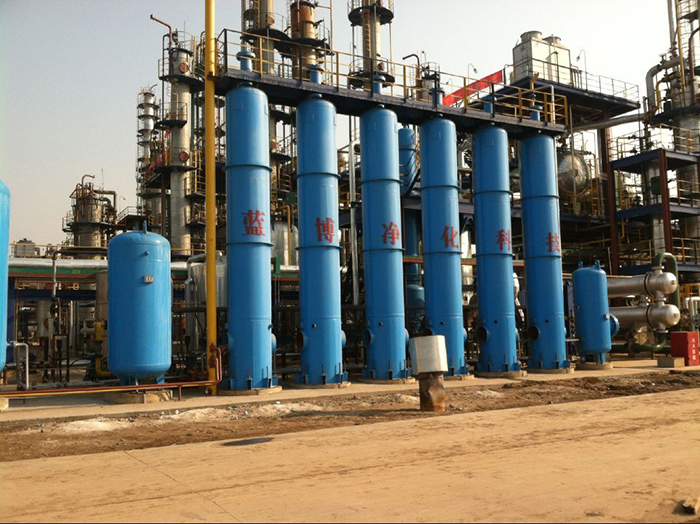Natural gas hydrogen production
Working Principle
After the natural gas is mixed with pressurized desulfurization and water vapor, it enters a special reformer, cracking and reforming under the action of catalyst to produce conversion gas containing hydrogen, carbon dioxide, carbon monoxide, etc. After the conversion gas recovers the heat, The carbon monoxide was converted to hydrogen by shift and then purified by PSA to recover heat from the combustion heat of the reformer.
Main reaction
The main processing processes of natural gas include atmospheric vacuum distillation, catalytic cracking, catalytic reforming and aromatics production. At the same time, including natural gas production, gathering and purification. Under certain pressure, high temperature and catalyst, alkanes and water vapor in natural gas react chemically.
CH4+H2O→3H2+CO-Q
CO+H2O→H2+CO2+Q
Process Brief Description
Hydrogen production from natural gas is composed of two parts: converting gas from natural gas to steam and purifying hydrogen (H2) by pressure swing adsorption (PSA). After compression and desulfurization, natural gas is mixed with water vapor and converted to hydrogen (H2), carbon monoxide (CO) and carbon dioxide (CO2) at 750 ~ 850 (?) C under the action of nickel catalyst. Carbon monoxide (CO) is converted into hydrogen (H2) by transformation, and then high purity hydrogen (H2) is obtained by pressure swing adsorption (PSA).
Technical indicators
Flow:50~50000Nm3/h
Purity:99%~99.999%
Pressure:1.3~3.0MPa
Temperature: normal temperature
Applicable areas: automotive hydrogenation, hydrogen peroxide, sorbitol, TDI, MDI, aniline hydrogenation and other fine chemical or pharmaceutical intermediates hydrogenation process, refinery hydrogenation process. After years of exploration and research, the design of natural gas hydrogen production has reached the international advanced level, covers a small area, easy to operate, energy consumption is lower than the same device 10%.
